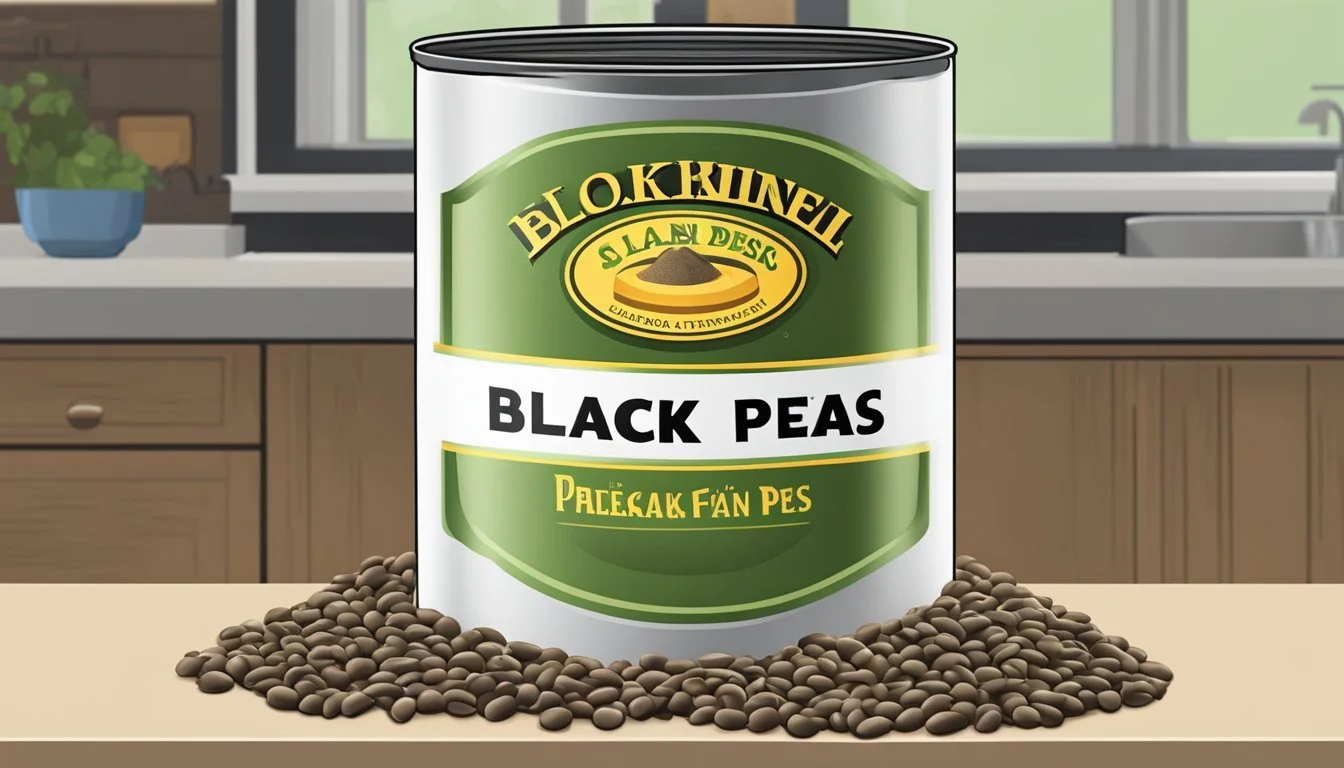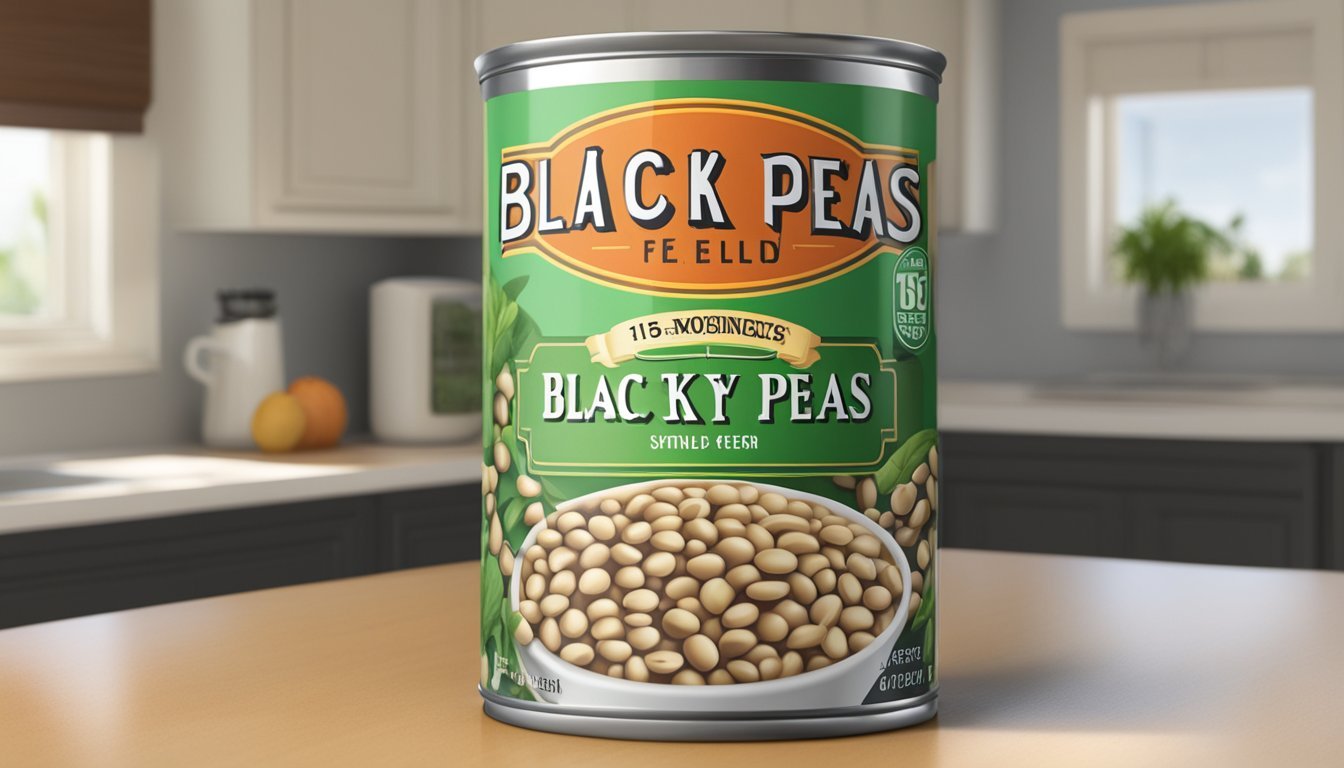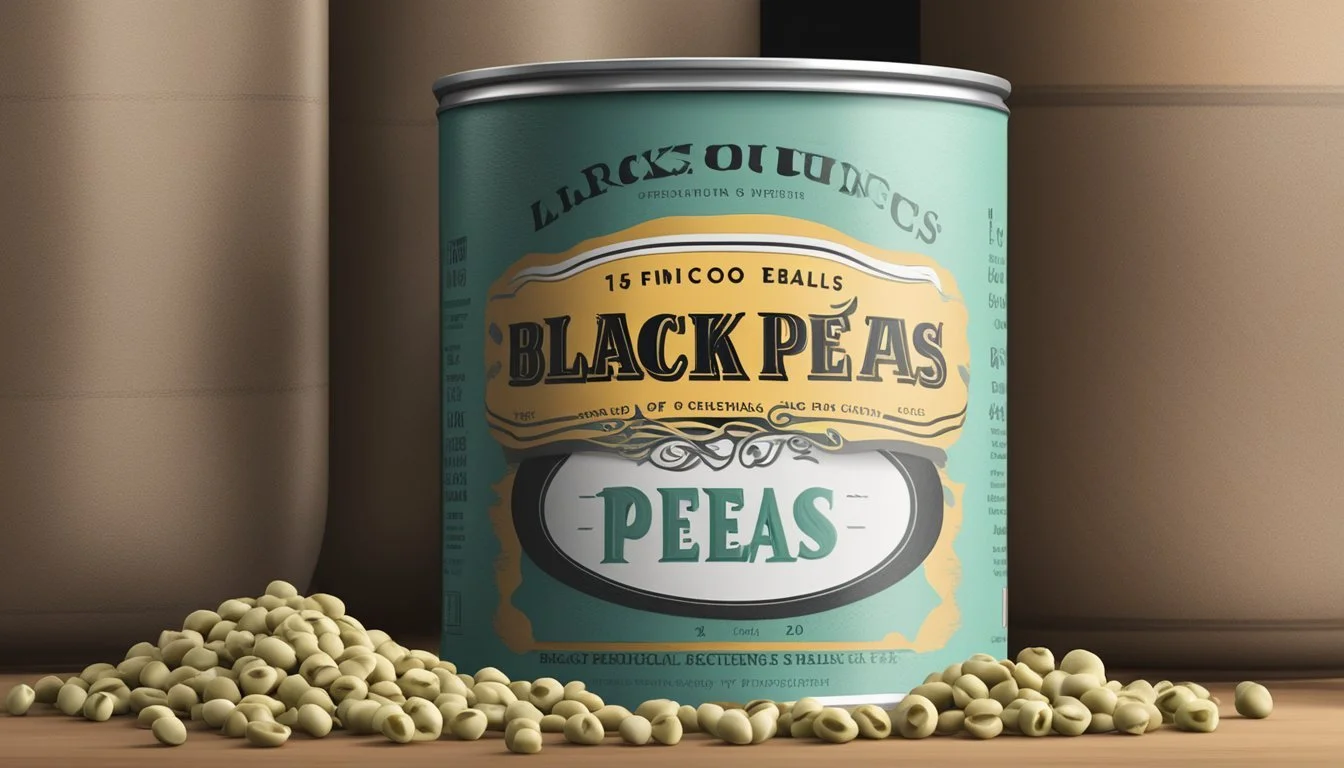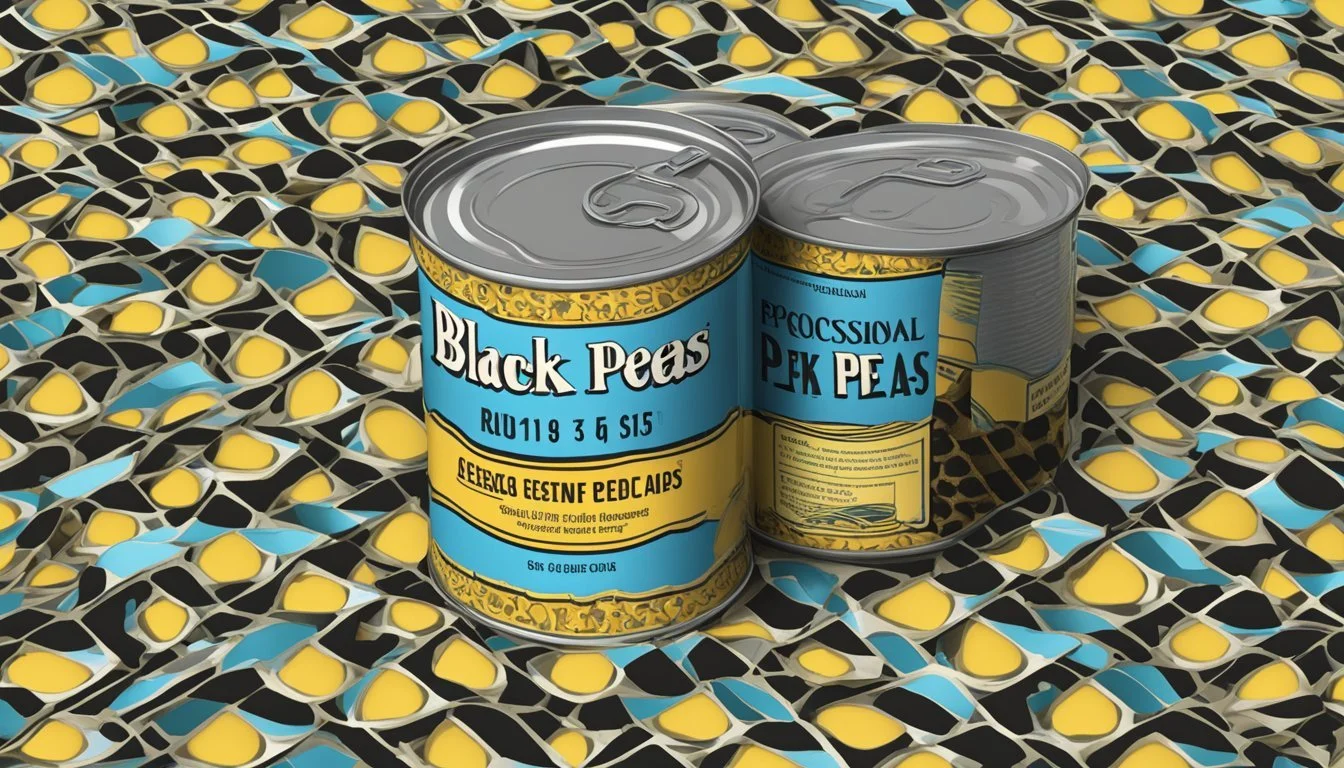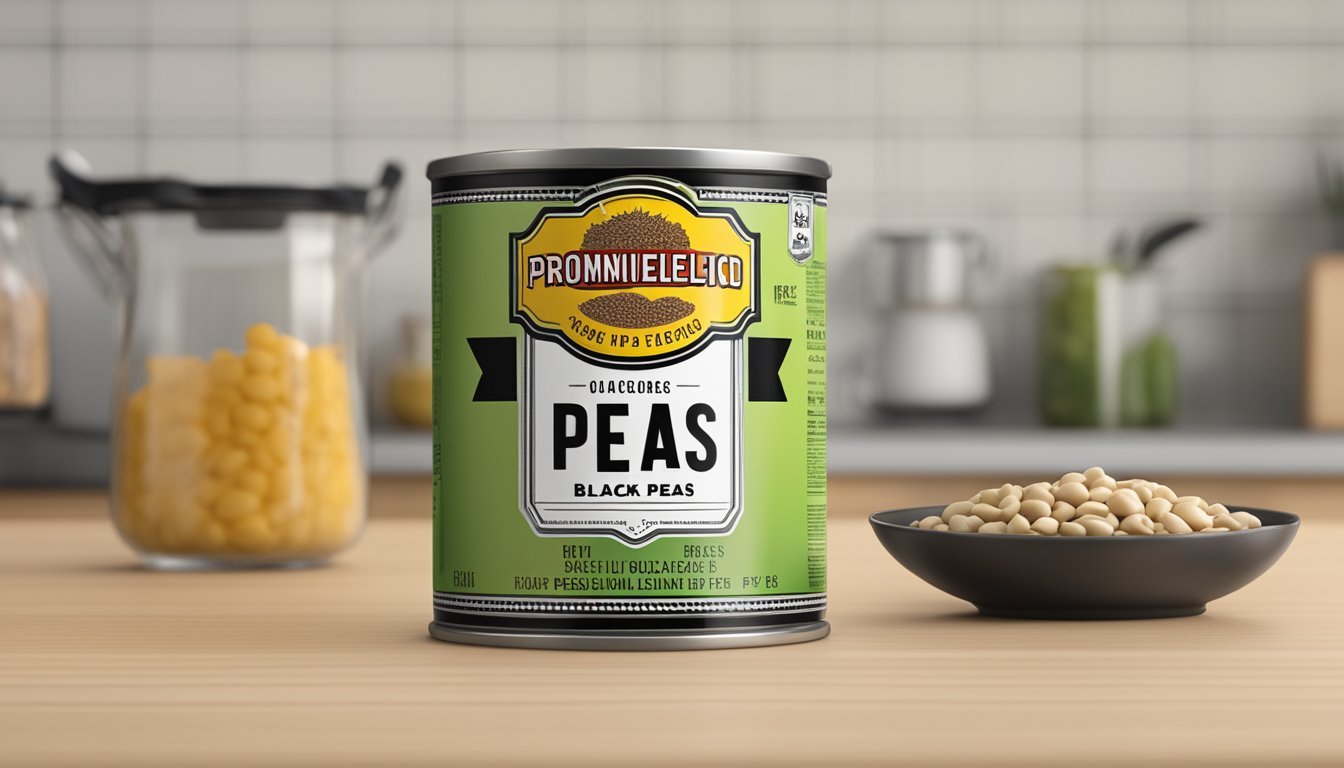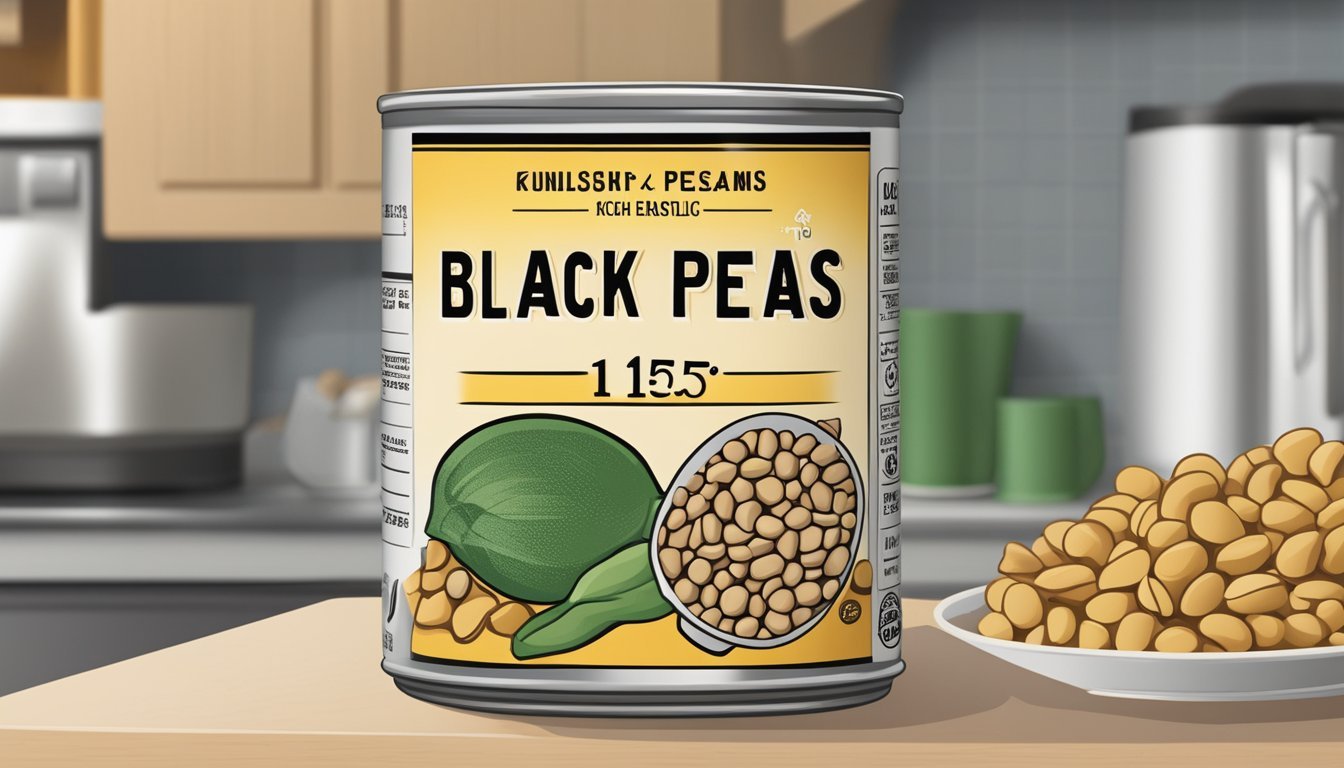How Many Ounces in a Can of Black-eyed Peas
Understanding Can Sizes and Measurements
Understanding the weight and volume of canned black-eyed peas is essential when following recipes or managing portion sizes. Canned black-eyed peas, a staple in Southern cuisine and popular around the world for their nutty flavor and versatility, usually come in standard sizes. The typical can size in the United States is 15 ounces, with the actual peas weighing around 10 ounces once the liquid is drained.
When cooking, it's important to note the difference in measurements between dried and canned black-eyed peas. While dried black-eyed peas need to be soaked and cooked, which can significantly increase their volume and weight, canned black-eyed peas are precooked and ready to use, offering convenience and saving time. For recipe conversions, cooks can typically substitute 1 15-ounce can of black-eyed peas, drained, for about 1.5 to 2 cups of cooked peas.
Understanding Black-Eyed Peas
Black-eyed peas are a variety of the cowpea and are part of the legume family, known for their distinctive black spot on an otherwise white surface. Often interchanged with the term beans, black-eyed peas provide a versatile ingredient in many culinary traditions.
Nutritional Profile: Black-eyed peas are a rich source of protein, crucial for building and repairing tissues. Additionally, they offer a high fiber content, beneficial for digestive health. Their nutritional value is vast, providing vital vitamins and minerals.
Nutrient Benefit Protein Supports muscle maintenance and repair Fiber Aids in digestion and satiety Iron Essential for blood health Potassium Helps to manage blood pressure
Not only are they an important staple in Southern American cuisine, but black-eyed peas also form an integral part of diets worldwide due to their ability to adapt to various flavors and preparations.
Culinary Uses: Cooked black-eyed peas can be consumed alone or added to salads, stews, and casseroles. They are notable for their quick cooking time compared to other beans, and they tend to become very soft, absorbing the flavors of accompanying ingredients well.
Understanding the weight and volume of canned black-eyed peas is useful for meal planning. A standard can contain varying ounces depending on the brand, but typically they are found in 15 to 16 ounce cans when drained.
Considering their shelf stability, black-eyed peas in cans are a convenient option for maintaining a nutritious diet that supports overall health and satisfies hunger with a hearty, protein-rich meal option.
Dried vs. Canned Black-Eyed Peas
When choosing between dried and canned black-eyed peas, consumers must consider differences in preparation, convenience, texture, and dietary content.
Dried black-eyed peas require soaking—either through an overnight soak or a quick soak method—to rehydrate them before cooking. The soaking process is crucial as it reduces cooking time and can help improve digestibility. Furthermore, dried peas offer a versatile cooking ingredient that can be used in a wide array of recipes, allowing one to adjust the firmness to their preference.
In contrast, canned black-eyed peas offer significant convenience for those with time constraints. They come pre-cooked and can be used immediately after draining, making them a quick addition to meals. However, this convenience may come with a softer texture than some recipes may call for. Additionally, canned options often contain added sodium, which can be a health consideration; it is advisable to rinse them to reduce the sodium content.
Here's a comparison outline:
Preparation: Dried peas require soaking and longer cook times; canned peas are ready to use.
Texture: Dried peas’ texture can be tailored in cooking; canned peas tend to be softer.
Sodium Content: Canned peas generally contain more sodium.
Consumers’ choice between dried and canned peas often hinges on considerations of time, dietary restrictions, and personal taste preferences. Each type provides a nutritious, fiber-rich addition to the diet, but it is essential to consider these factors when selecting the most appropriate form for a given recipe.
Preparation Essentials
Preparing black-eyed peas is a straightforward process, but it requires attention to detail to achieve the perfect tenderness and flavor. This section covers essential preparation methods, from soaking to seasoning.
Soaking Methods
Before cooking dried black-eyed peas, they must be rehydrated. Two common methods are practiced:
Overnight Soak: Cover the beans with several inches of cold water and let them soak for at least 6 to 8 hours.
Quick-Soak Method: Boil the beans in water for 2 minutes. Then, remove them from the heat, cover with a lid, and let them stand for 1 hour.
Cooking Techniques
Once soaked, the black-eyed peas are ready to cook.
Simmer: After boiling the peas, reduce the heat and allow them to simmer gently. Keep the pot uncovered, checking for tenderness after 45 minutes, aiming for 'tender but not mushy.'
Slow Cooker: For those preferring the set-and-forget approach, a slow cooker can be used to cook the black-eyed peas for 6-8 hours on low heat.
Seasoning and Flavoring
Proper seasoning is critical for delicious black-eyed peas. Begin with a base of aromatics such as chopped onions and garlic, then add:
Basic Seasonings: Salt and pepper are essentials. Add these to taste, making sure not to over-salt.
Herbs and Spices: Enhance the flavor with bay leaves, thyme, smoked paprika, oregano, or rosemary.
Fats for Flavor: Use olive oil or butter to sauté the aromatics, which will infuse the peas with rich flavor.
Cooking black-eyed peas to perfection involves choosing the right soak, using the appropriate cooking method, and seasoning the peas to enhance their natural, earthy flavor.
Nutritional Benefits
Black-eyed peas are a nutritious staple in many diets, offering a wealth of health benefits due to their rich content of vitamins and minerals. These legumes are particularly known for their high protein and fiber content, which are essential for maintaining muscle health and aiding digestion, respectively.
Protein and Fiber:
Protein: Vital for tissue repair and muscle growth
Fiber: Supports digestive health and can help in regulating blood sugar levels
In addition to protein and fiber, black-eyed peas provide valuable amounts of potassium and iron, two minerals important for overall health. Potassium is necessary for maintaining proper heart function and balancing fluids in the body, while iron is crucial for forming hemoglobin, which carries oxygen throughout the body.
Potassium and Iron:
Potassium: Helps control blood pressure and combats fatigue
Iron: Essential for blood formation and boosting energy levels
Moreover, black-eyed peas are a good source of folate, a B-vitamin necessary for DNA synthesis and repair, making it particularly important for pregnant women to prevent neural tube defects. The presence of vitamin A enhances this legume's profile, supporting immune function and eye health.
Folate and Vitamin A:
Folate: Supports cell division and growth, especially critical during pregnancy
Vitamin A: Aids in maintaining healthy vision and immune responses
Here are the typical nutrition facts for one cup of cooked black-eyed peas:
Calories: 160
Total Fat: 0.6g
Carbohydrates: 35.5g
Dietary Fiber: 11.1g
Protein: 13.2g
Potassium: Amount varies, check can label
Iron: Approximately 4mg
Folate: 210 micrograms
Vitamin A: Amount varies
The nutritional benefits of black-eyed peas make them a valuable addition to a well-rounded diet. Their content in key nutrients supports various aspects of health, from muscle function and digestive health to blood formation and immune defense.
Black-Eyed Peas in Recipes
Incorporating black-eyed peas into recipes is a nod to tradition with ample room for creative interpretation. These versatile legumes star in an array of dishes, from the deeply rooted Southern classics to imaginative global fusions.
Traditional Dishes
Hoppin' John is a Southern staple, especially significant in celebrating the New Year for good luck. The traditional recipe calls for black-eyed peas simmered with flavorful ham or ham hock, and served alongside rice. Often, Hoppin' John is complemented with cornbread, considered the perfect side dish to this comforting meal.
Recipe ingredients for Hoppin' John:
1 cup black-eyed peas
1 diced onion
1 ham hock or diced ham
1 cup rice
3 cups water or broth
Salt and pepper to taste
Black-eyed peas are also a popular addition to soups and stews in the American South, beloved for their ability to absorb flavors and add heartiness to these comfort foods.
Modern Twists
Chefs enjoy taking black-eyed peas beyond their conventional uses, incorporating them into salads, soups, and even vegetarian or vegan interpretations with ingredients that push the envelope of the expected. Some imaginative dishes include black-eyed pea fritters or a black-eyed pea hummus, showcasing the pea's firmer texture and nutty flavor. In these innovative recipes, black-eyed peas are often prepared with a mix of spices and paired with other grains or greens, transforming the humble legume into a modern, health-conscious dish.
Innovative black-eyed pea salad recipe ingredients:
2 cups cooked and cooled black-eyed peas
1 red bell pepper, diced
1/2 red onion, finely chopped
2 tablespoons olive oil
1 tablespoon balsamic vinegar
Salt and pepper to taste
Fresh herbs, such as parsley or cilantro
Whether following tradition or experimenting with new combinations, black-eyed peas prove to be a dynamic ingredient suited to various palates and occasions.
Cultural Significance
In the American South, black-eyed peas hold a special place in cultural traditions, especially when it comes to New Year's Day. The consumption of black-eyed peas on this occasion is steeped in the symbolism of good luck and prosperity for the coming year. The origins of this tradition are a tapestry of cultural narratives, with influences from African, Jewish, and Southern American practices.
Southern tradition dictates that each pea represents a chance at luck for the months ahead, turning a simple legume into a symbol of hopeful expectation. This symbolic meal is typically part of a larger feast that includes greens—symbolizing wealth and growth—and cornbread, representing gold.
Symbol Food Item Meaning Prosperity Black-eyed peas Good luck for the new year Wealth Greens Economic growth and prosperity Gold Cornbread Financial richness and success
Black-eyed peas are a symbol of resilience as well, having been grown in the South for centuries for their adaptability and nutritional value. They thrive in conditions where other crops might fail, representing growth and endurance in the face of adversity.
It's important to acknowledge that the "luck" aspect is not a proven effect but a cultural metaphor that endears these legumes to the hearts of those observing the tradition. While black-eyed peas are a simple food, they carry a powerful connotation within Southern society, embodying hope and renewal with each serving placed on the New Year's table.
Storage and Preservation
When it comes to preserving black-eyed peas, the method utilized plays a pivotal role in determining their shelf life.
Unopened Cans: Canned black-eyed peas, when unopened, remain shelf-stable due to the hermetic sealing process. One should store these cans in a cool, dry place away from direct sunlight. Once the can is opened, if any peas remain, they should be transferred to an airtight container and refrigerated.
Opened Cans and Leftovers:
Refrigeration: Use within 3-4 days.
Freezer: Store in airtight containers or freezer bags for up to 6 months.
List for Storage in Airtight Containers:
Transfer leftovers to the container promptly.
Minimize air exposure to the peas.
Label with the date to track freshness.
When using a crock-pot to prepare dishes with black-eyed peas, storing leftovers requires careful attention. Leftovers should be cooled, and promptly placed in airtight containers before refrigerating or freezing to prevent bacterial growth.
Freezing Cooked Black-Eyed Peas:
Allow cooked black-eyed peas to cool completely.
Portion the peas into desired amounts.
Place in freezer-safe bags, squeezing out excess air.
Clearly label each bag with the content and date.
By adhering to these storage recommendations, the quality and safety of black-eyed peas are well maintained, thus ensuring that their nutritional value and taste are preserved over time.
Troubleshooting Common Issues
When preparing canned black-eyed peas, consumers may encounter issues relating to texture and flavor. Below is a guide to address common problems.
Soaking: Although canned black-eyed peas are already rehydrated, some may prefer to rinse and soak them to reduce sodium or improve flavor. If the peas become too soft after soaking, it's advised to decrease the soaking time or skip this step altogether.
Simmering: The key to perfecting the texture of black-eyed peas lies in the simmering process. They should be simmered gently to maintain their integrity. Vigorous boiling can cause them to become mushy. If one lives at a high altitude, adjustments in simmering time may be necessary due to changes in boiling point.
Texture Too Firm: If peas are too firm, continue simmering and test every 5-10 minutes.
Texture Too Soft: If peas have become too soft, they may have been overcooked. Use them in recipes where a firmer texture is not critical.
Acidity: Acidic ingredients can affect the texture of black-eyed peas, causing them to become tough. Add acidic components like tomatoes or vinegar towards the end of the cooking process.
Step-by-Step Guide: For a successful outcome, follow recipes with a step-by-step guide. This ensures that each addition, from soaking to simmering, is timed correctly to achieve the desired texture.
Remember, cooking is not just a science but also an art that may require a dash of humor. Don't let the process become as tough as an overcooked pea: stay patient, follow these tips, and pun intended, you’ll ‘pea’ just fine.

